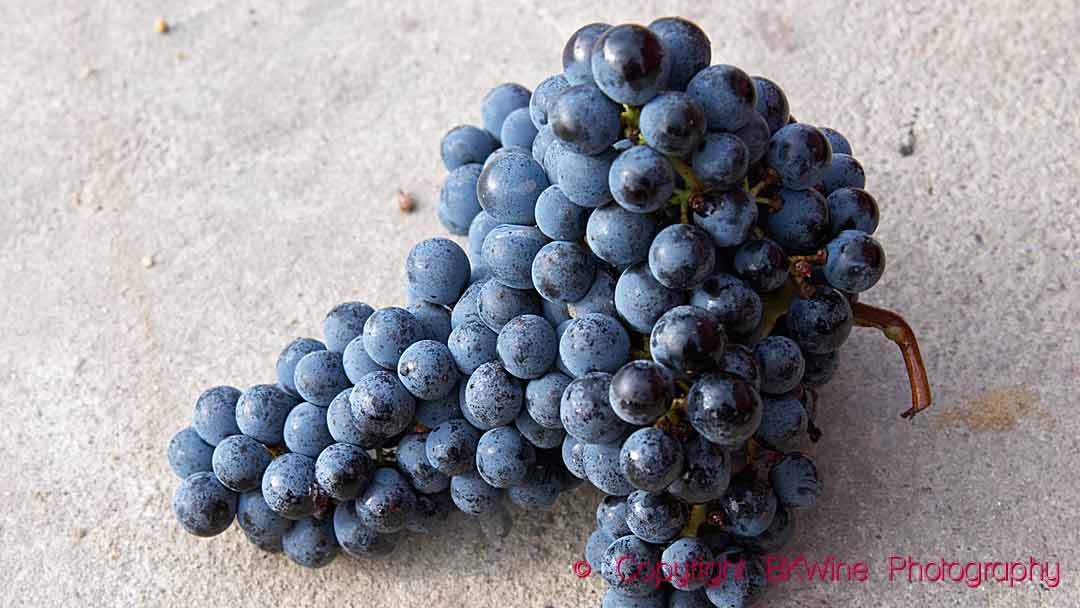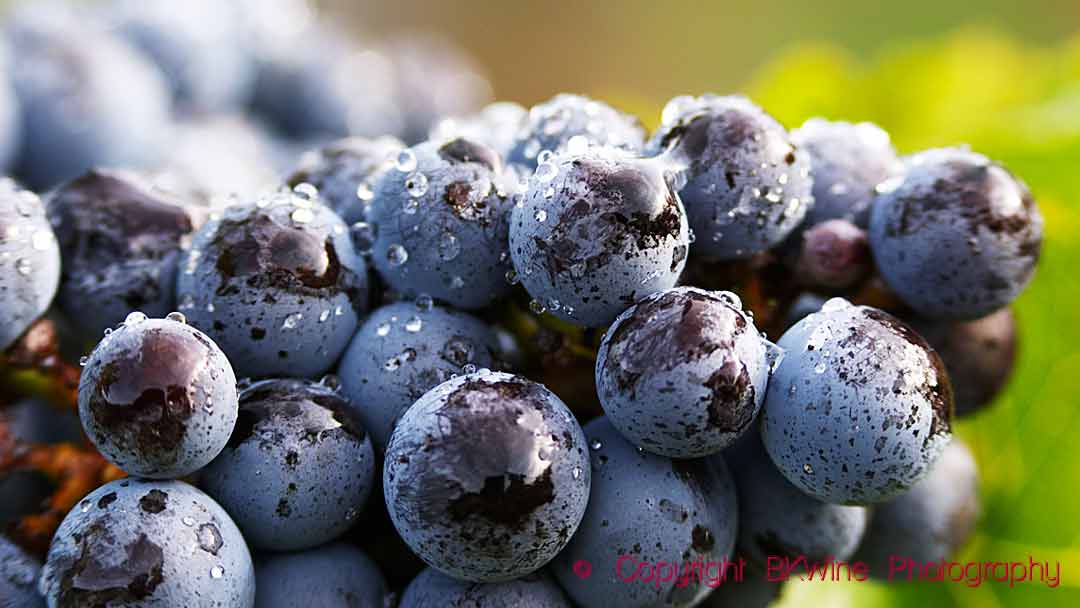Cabernet franc is becoming one of the trendy grapes. It has long been in the shadow of its cousin cabernet sauvignon but more and more wine consumers are appreciating it for its freshness, acidity and structure. Traditionally used in the Loire, for single varietal wines, and in Bordeaux as a component in the classic Bordeaux blends it is now planted all over the world. USA has the fourth largest plantings. It is most popular in the cool climate regions of Washington and New York. We met with three producers to explore what cabernet franc can do in New York’s Finger Lakes and Long Island viticultural areas.
Cabernet franc seems to fit well into the modern world of wine. The light style, the acidity and the herbal character that emphasizes the freshness attract wine lovers worldwide. And winemakers love it as well. So, no wonder the grape has spread well beyond Bordeaux and the Loire Valley. It does well in cooler climates. So, what happens when the grapes get to New York? To find out, we met (on zoom) three New York winemakers, tasted their cabernet franc and learnt about their philosophy.
Read our grape variety profile on cabernet franc here.
This is a longer version of an article published on Forbes.com.
Christopher Bates at Element Winery, Finger Lakes
Christopher Bates is the owner of Element Winery and also the winemaker. He grew up here and came back after exploring the world of wine as a sommelier and a chef. Christopher also worked as a winemaker in Italy and the Mosel Valley in Germany. He started Element Winery in 2007, and he hasn’t stopped pushing the Finger Lakes since. He makes many different wines in small quantities, aiming at high-quality wines representative of the region and the cool climate.
When he started, he says, the general feeling was that the region Finger Lakes has a limit. “Now we are more confident. We don’t make 15 % alcohol wines. This is a place for classic, old-school wines that I hope will have the ability to age. The acidity is all-important.”
His wines typically have an alcohol level of around 11 %. This is true for his Cabernet Franc 2014, Element Winery, Finger Lakes. It is light and crisp in style, with high, refreshing acidity, dried fruit, some tannins in the finish. It is balanced and elegant.
This wine was 29 months in oak and another 24 months in bottle before Christopher felt it was ready for release. 2014 was a great but difficult vintage. “We have huge vintage variations”, he says, “but we strive to be good also in challenging vintages”.
Christopher buys grapes from different soil types and different grape growers. Harvest is by hand and is followed by sorting of the bunches and destemming. For the fermentation, he works with the natural yeast and adds no enzymes. The malolactic fermentation is spontaneous.
Apart from cabernet franc, he thinks that chardonnay has good potential in the Finger Lakes. He also likes cabernet sauvignon, the old-fashioned Californian style from the 1960s – “we can do that here!”.
Lilia Perez at RGNY, Long Island
Lilia Perez has been responsible for the wine production at RGNY in Long Island since 2018. She started out promoting wine in Mexico but moved to the production side. She studied winemaking in Bordeaux and trained at well-known châteaux such as Brane Cantenac in Margaux and Franc Mayne in Saint Emilion.
“We are close to Riverhead”, says Lilia, “and our red grapes ripen properly. RGNY has 100 acres of vines and 14 different grapes varieties. “We work with Vitis vinifera; it is rare with hybrids in Long Island. But we do have disease pressure because of the humidity.”
Cabernet franc is doing well here. The wine from Lilia that we tasted is proof of that. Cabernet Franc 2019, RGNY, North Fork Long Island is light and easy-drinking, very fresh with intense fruity and spicy aromas, some herbal notes typical of the grape. It is a balanced wine, refreshing, and although easy-drinking, it is complex.
“We sell 60 % of our grapes and use 40 % for our own wines”, says Lilia. She keeps the cabernet franc grapes to make small volumes of wines. To reduce the risk of fungus diseases, she does cluster thinning. She picks when she has the best balance between sugar and acidity.
Bad grapes are removed on a sorting table, and the bunches are then destemmed. She uses commercial yeast but no bacteria for malolactic fermentation. The maceration period is quite long. After pressing the grapes, the wine goes to oak barrels for ten months, 45 % new oak, the rest in neutral oak.
She also has another favourite grape, and it is sauvignon blanc. “You can do many things with sauvignon blanc, wild ferment it, blend it with semillon; it gives us good quality every year.”
Josh Wig at Lamoreaux Landing, Finger Lakes
Josh Wig is co-owner and winemaker at Lamoreaux Landing in Finger Lakes. Lamoureaux Landing is on the eastern hillside of Seneca Lake with western exposure. Their vineyard surface is divided into 20 different blocks. Riesling, chardonnay and cabernet franc are the most important grapes. “As a wine region, we are very young and humble, and we have a lot to learn”, says Josh. He thinks cabernet franc will be in focus for the next 30 years.
“Finger Lakes have eleven lakes, all of them unique”, he continues. “We wouldn’t be here without the lakes. During the day, we have high temperatures; at night, it goes down to 50 degrees F. The vines lock in the acidity and stop maturing; this is crucial.”
Cabernet franc is an important grape for him and the region, he says. “It is expressive, and it’s resistant; we almost have no worries. Checking the acidity is vital when deciding the harvest date. We have a pretty large harvesting window in our climate, but you have to pick before you lose acidity.”
They harvest by machine for speed but also by hand. For some wines, he uses whole berry semi-carbonic fermentation. “I don’t add oak or tannins. I want to show the natural expression of the grapes.”
“To be sustainable is important”, Josh points out. He thinks organic is possible but not advisable. “Organic does not always mean better. Sustainable means you are going to be here 60-80 years from now. You have to do it right, or you will be out of business. We will be better off in the long run [being sustainable]. It is better for the environment and better for the grapes.”
One example of Lamoreaux Landing’s commitment to sustainability is their solar energy installation which provides 100 % of their electrical energy needs.
T23 Cabernet Franc 2020, Lamoreaux Landing, Finger Lakes, has a floral character and also ripe fruit and delicious, appetizing acidity. The tannins are there but in the background. Although young, it is very drinkable now.
We believe there is a great future for cabernet franc in New York.



















